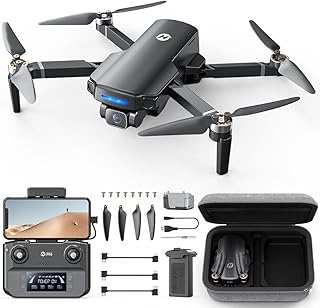Unveiling the Secrets of Drone Photography and Videography
Drone photography and videography have become increasingly popular, offering captivating perspectives and innovative storytelling possibilities. But behind the stunning visuals lies a world of technical know-how and creative artistry. Let's delve into the secrets of this exciting field:
1. The Gear: More Than Just a Drone
* Drones: A plethora of drones exist, each with its strengths and weaknesses. Consider factors like camera quality, flight time, range, weight, and price. Research and choose the drone that best suits your needs.
* Camera: The drone's camera is crucial. Look for high resolution, good dynamic range, and features like RAW capture and 4K video.
* Accessories: Invest in essential accessories like extra batteries, SD cards, filters, and a carrying case.
* Software: Editing software like Adobe Premiere Pro or Final Cut Pro is necessary to polish your photos and videos.
2. Mastering Flight and Safety
* Regulations: Understand and adhere to local and national drone regulations, including airspace restrictions and licensing requirements.
* Flight Technique: Practice safe flight techniques. This includes:
* Understanding wind conditions: Strong winds can affect stability and control.
* Maintaining safe distance from obstacles: Always keep a safe distance from buildings, people, and other aircraft.
* Staying within visual line of sight: Avoid flying beyond your visual range.
* Respecting privacy: Obtain permission before flying over private property or recording individuals.
* Emergency Procedures: Learn how to handle unexpected situations, such as battery failure or loss of signal.
3. Composition and Storytelling
* Perspective: Drones offer unique perspectives. Explore aerial shots, panoramas, and creative angles.
* Rule of Thirds: Use the rule of thirds to create visually appealing compositions.
* Leading Lines: Utilize natural elements like roads, rivers, or fences to guide the viewer's eye.
* Storytelling: Think about the story you want to tell. Use visuals and movement to convey your message.
4. Lighting and Time of Day
* Golden Hour: The golden hour, just after sunrise and before sunset, offers warm, soft lighting for stunning photos and videos.
* Blue Hour: The blue hour, just before sunrise and after sunset, provides cool, ethereal lighting for dramatic effects.
* Weather: Pay attention to cloud cover and weather conditions. Overcast skies can create soft lighting, while clear skies offer brilliant colors.
5. Post-Processing Techniques
* Color Correction: Adjust color balance, contrast, and saturation to enhance your images.
* Sharpening and Noise Reduction: Sharpen images and reduce noise for a cleaner look.
* Adding Effects: Use creative filters, transitions, and other effects to enhance your videos.
* Music and Sound: Select appropriate music and sound effects to create a compelling atmosphere.
6. Finding Inspiration
* Explore Drone Photography Communities: Connect with other drone photographers and videographers online and through social media.
* Study the Work of Professionals: Learn from the best by analyzing the techniques and compositions of renowned drone artists.
* Experiment and Be Creative: Don't be afraid to try new things and experiment with different settings, angles, and compositions.
By mastering these secrets, you can unlock the full potential of drone photography and videography, capturing stunning visuals and sharing your unique perspective with the world. Remember, practice makes perfect, so keep exploring and pushing your creative boundaries!


